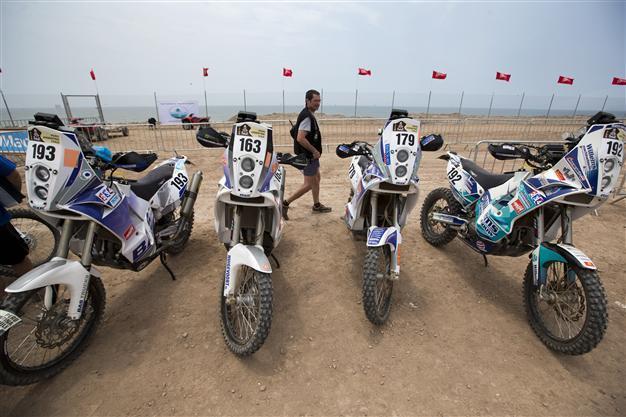Questions on environment, safety around Dakar Rally
LIMA - Agence France-Presse

A total of 459 vehicles will make their way on a daunting route from Lima to the finish line in Santiago for 16 days in the thrilling Dakar Rally. AP photo
The Dakar Rally kicks off its 34th edition on Jan. 5 with question marks over the grueling 8,400-kilometer event’s environmental impact and safety record.
In all, 459 vehicles will blast their way from the Peruvian capital of Lima on their way to the finish line in Santiago, Chile on Jan. 20.
The race that originated in 1978, when it traditionally started from Paris on New Year’s Day and made its way to Africa, has been run on South American soil over the past five years as a result of security issues that hit the original route.
However, this year’s edition has already come in for criticism after paleontologists warned that the heavy vehicles will once again pose a serious risk to whale and dolphin fossils dating back more than 20 million years.
“We have many skeletons of large mammals, especially whales and dolphins, and the fossilized remains of invertebrates that have suffered damage due to passing vehicles,” Carlos Vildoso, director of the Peruvian Institute of Paleontology, told AFP.
Organizers have also been keen to pay down the dangers associated with the Dakar which has claimed 59 lives, including 20 spectators, over the years.
Twelve months ago, Argentinian rider Jorge Martinez Boero was killed on the first day of the race.
This year, around 150 security staff as well as 60 doctors and surgeons will be deployed, backed up by five helicopters and 10 medical vehicles, all mobilised 24 hours a day.
“This is an extreme sport,” said race organizer Etienne Lavigne. “Zero risk doesn’t exist.”
This year’s edition will be watched with a dose of sorrow in Turkey, due to the absence of motorcyclist Kemal Merkit, who has popularized the Dakar Rally in the country.
Merkit was killed while racing in the Transanatolia Rally in Sept. 7, 2012. Merkit participated to the daunting Dakar Rally eight times since 2002.
